Arts
No Turning Back
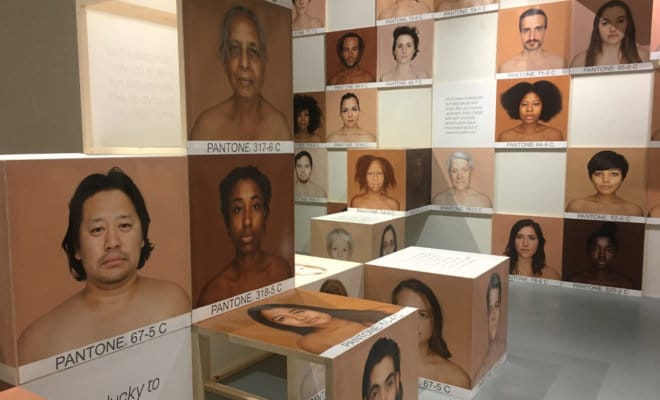
Humanae by Angelica Dass.
Photo: Migration Museum Project
UK’s Migration Museum captures the 700 years of immigrant history.
It seems oddly fitting that the UK’s first museum dedicated to the topic of migration has yet to find its permanent home. London’s newest museum began life four years ago as a series of temporary exhibitions and events, before moving to its current venue in spring this year.
It’s now housed in The Workshop, Lambeth, a cavernous arts space in a South London borough that has historically been, and continues to be, a destination for many migrants. The building is earmarked for redevelopment, and so it seems likely that next year the museum will be moving on once again. For now, though, the organization is using its current space to showcase exactly why there is a need for a permanent Migration Museum in Britain.
The museum’s remit is to explore a divisive issue that is so often talked about in a polarized way. Its current exhibition, No Turning Back, was conceived as a reaction to the 2016 EU Referendum and ongoing Brexit negotiations.
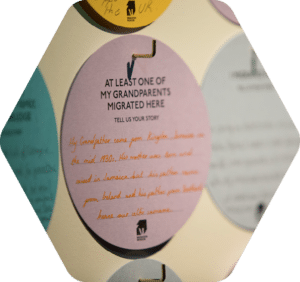
Photo: Migration Museum Project
As Britain stands poised for momentous change that will affect its relationship with the world, the exhibition explores seven key “migration moments” from British history, to show that this is not the first time that the movement of peoples from one place to another has had a profound effect on the country.
Indeed, one exhibit in No Turning Back quotes a newspaper headline decrying immigrants as “a pest and a menace,” a sentiment that will be all too familiar to anyone who witnessed the anti-immigration campaign waged by the British tabloid press in the run-up to the 2016 EU Referendum. But this particular indictment is actually taken from an early 20th-century edition of the Pall Mall Gazette and describes the influx of Jewish refugees escaping persecution in Eastern Europe. Clearly, the cry of “Keep Britain British” has echoed down through the generations.
According to Aditi Anand, one of the curators of No Turning Back, this idea of continuity is central to the exhibition:
“One of the aims is to show history not just as something that happened 700 years ago, but something that informs who we are in the present as a country and as people. That, really, it has a contemporary relevance,” she says. “At times people have been accepted and at times rejected, and it’s just part and parcel of this great national story.”
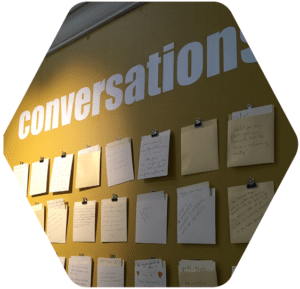
Ranging from the 13th to the 21st centuries, the migration moments that make up the framework of No Turning Back include the expulsion of the Jews from England in 1290, the first East India Company voyage to India in 1607, and the Rock Against Racism movement of the 1970s. “We wanted to pick moments that reflect the long history of migration. That was our rationale for choosing things that go back to 1290 to the present day,” says Anand. “We wanted to show that there’s this very long history and to put it into context.”
The moments are not presented in chronological order as a history of migration in Britain. Rather, they embody themes — colonialism, control of borders, persecution, the media, globalisation, grassroots movements — that help to illustrate the way that migration has shaped the country.
Spanning the height of one narrow column in the gallery is the Global Passport Power Rank: a list of passports of the world ranked by how many countries holders can visit without a visa. Topping the list is Germany, with 158; way down at the bottom, hovering just above the floor, is Afghanistan, with a mere 26. It could be easy to forget that behind these numbers there are human beings, real stories of people being granted or denied the right to free travel based on an accident of birth. It’s the aim of the Migration Museum to unpack these stories. From the thoughts that Almas Mir jotted on a menu card on her flight to England from Pakistan in 1966 — “I will be embracing a new life, in a far-off land that I have only read about” — to Martin Spafford’s reminiscences of watching punk and reggae bands playing together at the Rock Against Racism carnival, the exhibition reveals the people behind the numbers.
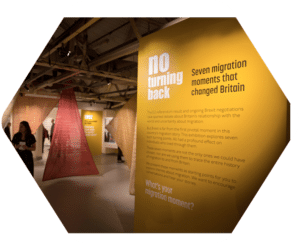
No Turning Back. Migration Museum Project
As well as artifacts, personal histories and photographs, No Turning Back presents a number of contemporary artworks that relate and react to the moments explored.
One piece that grabs visitors immediately is The Singh Twins’ All that I Am, a stunningly intricate painting that illustrates their Punjabi father’s journey to Manchester following the Partition of India.
Also featured is a selection of photographs from Angélica Dass’s project Humanae, which aims to create a photographic catalogue of every conceivable skin tone. The people-based Pantone swatches ask the viewer to reconsider our identity as part of one human race.
“We’ve tried to bring the contemporary relevance of the moment out of every moment through the artwork and the personal stories,” says Anand. “We like collaborating with artists because it really brings the history to life and allows us to have a contemporary lens on the past. We collaborated with a lot of different artists who interpreted the moment using their own compass, from their own point of view.”
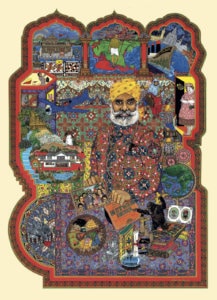
All That I Am by the Singh Twins. Photo: Migration Museum
In order to gather new stories, No Turning Back also asks its audience to participate, encouraging them not just to consider the exhibits presented, but to share their own migration moments and join in with conversations.
Lining one wall is a series of envelopes containing people’s responses to questions posed by fellow visitors: questions such as, “Could we ever live in a world without borders?” “What is the difference between a migrant and an expat?” And, “What advice would you give to biracial couples that have ‘mixed race’ children?”
“The conversation we generate is a really big part of it,” says Anand. “People tell us what moments they think are of national or personal importance to them. We want to make people feel that the migration story is a part of their story. We’re not a campaigning organization; we just try to tell really rich stories that show that migration has been this organic thing that’s happened across generations. We’re showing that there is a common thread that connects us.”
The most recent migration moment featured in the exhibition is the 2011 census, which revealed the rise of mixed-race Britain, with an 85% growth in the number of people describing their heritage as “mixed or multiple ethnic.”
The exhibition presents portraits and personal accounts from mixed-raced families in Britain today. The photographs celebrate just how diverse the family is in modern-day Britain, to emphasize the way that traditional notions of “Britishness” are being challenged and changed. If there’s one thing No Turning Back makes clear, it’s that there may be no turning back.
| VISITOR INFO No Turning Back is on at the Migration Museum, Lambeth, London, until 25 February 2018. Admission is free. For more information visit www.migrationmuseum.org/exhibition/noturningback |
